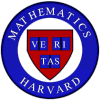
|
Mathematics 99r, Tutorial Topics, Fall and Spring(2004-2005), (For Summer Tutorials 2004, look here ) |
|
||||||||||
| ||||||||||||
| Concentration | Courses in Mathematics | 21, 23, 25, or 55? | Graduate Schools/Fellowships | Writing a Senior Thesis | Fall/Spring Tutorials | Which Math course is for you? |

|
Mathematics 99r, Tutorial Topics, Fall and Spring(2004-2005), (For Summer Tutorials 2004, look here ) |
|
||||||||||
| ||||||||||||
|
| This is an archived page. The currently offered tutorials are here |
1. Additive Number Theory - Fall 2004 taught by Michael ScheinPrerequisites: algebra (Math 122), some real analysis (as in Math 112 or Math 23, 25 or 55) would be useful as well.Description: If you have a set of integers, what can you say about its sumset (the set of numbers that can be written as a sum of two elements of your set)? Or conversely, if you know the sumset, what can you say about the original set? If your set contains lots of arithmetic progressions of length three, what can you say about the chances of finding longer ones? The answer to all of these: more than you might think! Additive number theory is an exciting field that doesn't use as much heavy machinery as most areas of mathematics, which makes it great for a tutorial. First we'll study some fundamental theorems, and then we'll be ready to plunge into research articles (some of them only a few months old!) that apply them to questions like the ones above, and many more. We'll also look at connections with algebraic number theory and analysis. If you want to become devilishly clever, add some useful methods to your toolbox, and can't wait until grad school to read preprints, this is the tutorial for you. |
2. Algebraic Surfaces and Complex Manifolds of Higher Dimension - Fall 2004 taught by Sabin CautisPrerequisites: complex analysis (Math 113) and knowledge of manifolds (such as in Math 134 or Math 135).Description: The illustrious story of curves and surfaces lies at the intersection of complex analysis, topology and algebraic geometry. In this tutorial we will try to use the classification of surfaces as motivation to learn many fundamental techniques, concepts and constructions. We will also work with such topics as singularities, sheaves, singular and Cech cohomology, K3 surfaces, abelian varieties and whatever else we can squeeze in. In retrospect, this is all the stuff I wish I had learned as an undergraduate but never got a chance! |
|
3.Sheaves in Logic and Geometry - Spring 2005 taught by Jay Pottharst and Cameron FreerPrerequisites: topology (Math 131) and knowledge of manifolds (such as in Math 134 or Math 135).Description: Sheaves are ubiquitous tools in mathematics. They can unify a great variety of constructions, and allow for the proof of extremely broad results. Many fundamental theorems in geometry and topology rely on facts that are most easily proved using sheaf-theoretic machinery. The notion of a topos unites the subject with ideas from logic and set theory. Hence, exposure to these methods help to make accessible a wide range of higher mathematics. This tutorial will cover the foundations of the subject, including some basic category theory and homological algebra. Our applications will draw from two areas: logic and geometry. On the logic side, we will cover topoi and the independence of the Axiom of Choice from Zermelo-Fraenkel set theory. On the geometry side, we will cover the concept of monodromy, descent, and comparison-of-cohomology theorems. Familiarity with topological spaces, and the basics of either manifolds or algebraic geometry, will be expected. Acquaintance with categories will be helpful, although we will review it. |
4. Complex Multiplication Spring 2005 taught by Sug Woo Shin and Teru YoshidaPrerequisites: complex analysis (Math 113) and algebraic number theory (such as in Math 123).Description: Number theory is the theory of integers - but in fact it is much more than that. It has been a major driving force for the development of modern mathematics for centuries, because questions on integers have turned out to involve deep theories in all branches of mathematics. Complex multiplication is one of the first instances of such a deep connection; the theory of complex functions and Galois theory have their origin in the complex multiplication of elliptic functions, conceived in young Gauss' mind. |
| Last update: 7/15/2004 | Back to the Math department homepage | Back to the undergraduate information page |